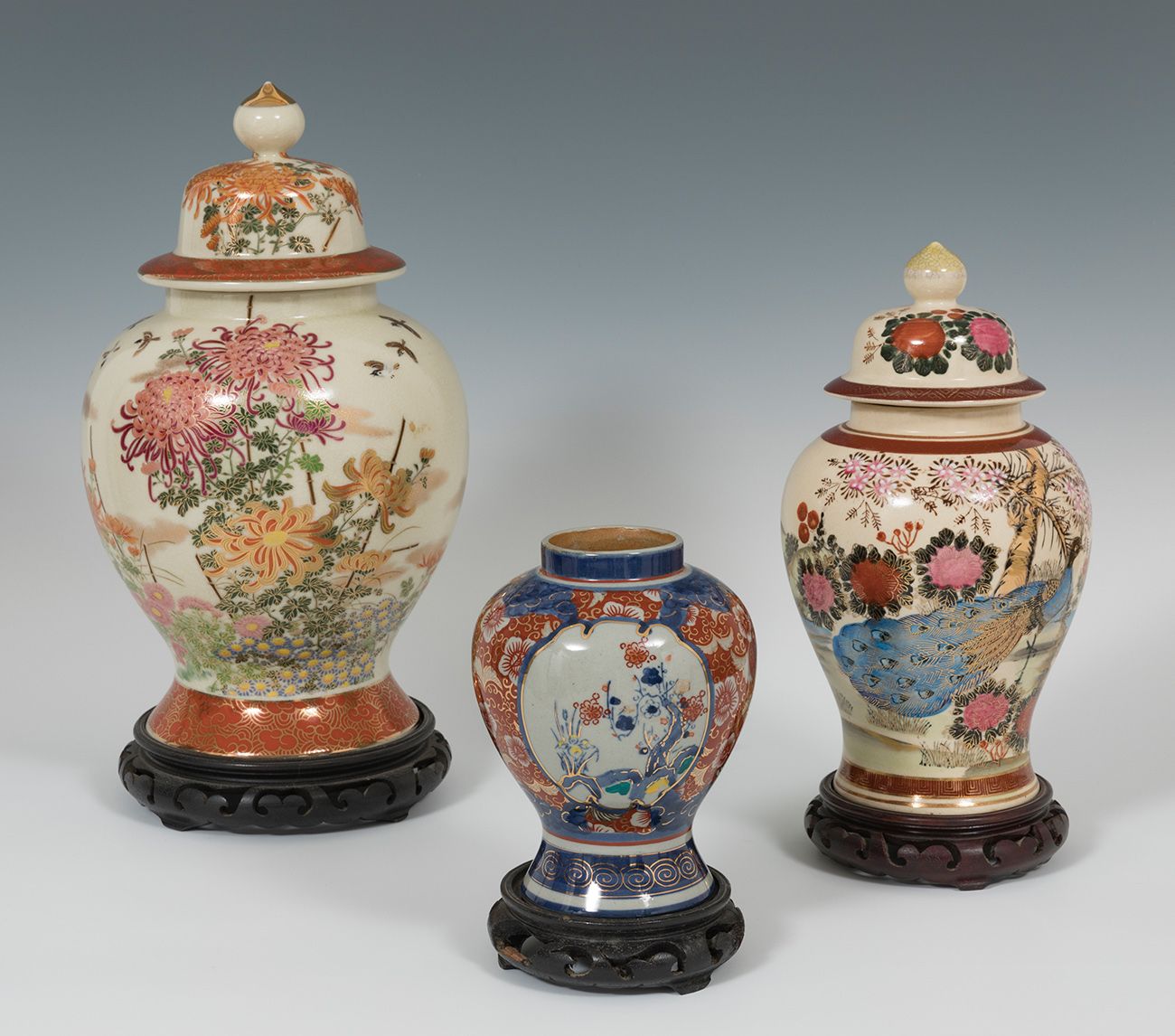Description
Imari vases; Japan, 20th century. Gilt porcelain. One of them is missing on the lid. They have slight flaws in the gilding. They show a stamp on the base. Measurements: 34 x 18 cm; 37 x 18 cm (larger base); 15 x 12 cm; 19 x 12 cm (smaller base). Set made up of three 20th-century vases with profuse ornamentation, all of which are different, the main characteristic of the Imari style being the use of underglaze cobalt-blue enamel, combined with other enamels over the glaze, mainly iron-red and gilding. When it also includes gilding, as seen here, it is called Imari Nishiki. Imari wares were produced in Japan from the third quarter of the 17th century until 1730-35, although there was a revival of the style in the 19th century. In decorative terms, Imari is very free, with compositions that occupy the entire space of the piece, generally asymmetrical, combining different motifs and cartouches of various shapes, as seen here.
29
Imari vases; Japan, 20th century. Gilt porcelain. One of them is missing on the lid. They have slight flaws in the gilding. They show a stamp on the base. Measurements: 34 x 18 cm; 37 x 18 cm (larger base); 15 x 12 cm; 19 x 12 cm (smaller base). Set made up of three 20th-century vases with profuse ornamentation, all of which are different, the main characteristic of the Imari style being the use of underglaze cobalt-blue enamel, combined with other enamels over the glaze, mainly iron-red and gilding. When it also includes gilding, as seen here, it is called Imari Nishiki. Imari wares were produced in Japan from the third quarter of the 17th century until 1730-35, although there was a revival of the style in the 19th century. In decorative terms, Imari is very free, with compositions that occupy the entire space of the piece, generally asymmetrical, combining different motifs and cartouches of various shapes, as seen here.
